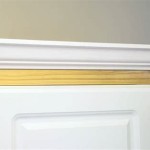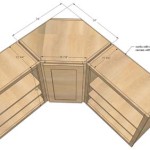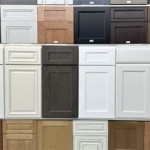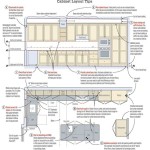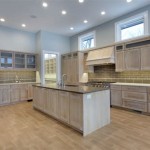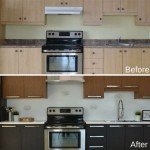Does Steam Damage Kitchen Cabinets?
Steam is an unavoidable byproduct of cooking. While beneficial for creating delicious meals, excess steam can potentially impact the longevity and appearance of kitchen cabinets. Understanding the effects of steam and implementing preventative measures are crucial for maintaining a beautiful and functional kitchen.
Kitchen cabinets are typically constructed from various materials, including wood, wood composites like particleboard and MDF (medium-density fiberboard), and metal. Each material reacts differently to prolonged exposure to moisture and heat, the two components of steam.
Solid wood cabinets, especially those made from hardwoods like oak or maple, are generally more resistant to steam damage than their engineered counterparts. However, even hardwood can warp, crack, or expand with consistent exposure to high levels of humidity and heat. The finish applied to the wood also plays a significant role. A durable, moisture-resistant finish provides a protective barrier, mitigating the impact of steam.
Engineered wood products, such as particleboard and MDF, are more susceptible to steam damage. These materials are composed of wood fibers and resins, which can absorb moisture readily. Exposure to steam can cause these materials to swell, delaminate, and lose structural integrity. The decorative veneer or laminate layer can also peel or bubble due to moisture infiltration.
Metal cabinets, while generally more resistant to moisture damage than wood or wood composites, are not entirely immune to the effects of steam. Prolonged exposure to high humidity can lead to rust formation, particularly on cabinets made from less corrosion-resistant metals.
The most vulnerable areas of kitchen cabinets are those directly exposed to steam generated during cooking. Cabinets located above the stovetop, oven, and dishwasher are particularly at risk. Steam rising from these appliances can condense on the cabinet surfaces, leading to moisture accumulation.
Several factors contribute to the likelihood and severity of steam damage. The frequency and duration of cooking activities play a significant role. Homes with frequent cooking or extended periods of simmering and boiling will experience higher levels of steam. The ventilation in the kitchen also influences the concentration of steam. Adequate ventilation helps to disperse steam, reducing its impact on cabinets.
The climate plays a role as well. Humid climates can exacerbate the effects of steam, as the air is already saturated with moisture, making it harder for the cabinets to dry out. This can lead to prolonged exposure to moisture and increase the risk of damage.
Protecting kitchen cabinets from steam damage requires a multi-pronged approach. Proper ventilation is paramount. Using a range hood that vents to the outside effectively removes steam from the cooking area. Ensuring the range hood is properly sized for the stovetop and using it consistently during cooking are essential.
Regular cleaning of cabinets is also crucial. Wiping down cabinet surfaces with a damp cloth after cooking removes any condensed moisture, preventing it from penetrating the material. Avoid using excessive water or harsh cleaning chemicals, which can damage the finish.
Adding a backsplash behind the stovetop provides an additional layer of protection. The backsplash acts as a barrier, preventing steam from directly contacting the cabinets. Choosing a moisture-resistant material for the backsplash, such as tile or stainless steel, is recommended.
Sealing any gaps or cracks in the cabinets, particularly around hinges and joints, can further prevent moisture infiltration. Regularly inspecting cabinets for signs of damage, such as swelling, warping, or discoloration, allows for prompt repairs and prevents further deterioration.
When choosing new kitchen cabinets, consider materials that offer greater resistance to moisture. Opting for solid wood with a durable, moisture-resistant finish or considering water-resistant materials like Thermofoil can provide added protection against steam damage. While these materials may come with a higher initial cost, they can offer long-term savings by minimizing the need for repairs or replacements due to steam damage.
Maintaining a consistent temperature and humidity level in the kitchen can also help mitigate the effects of steam. Avoid extreme temperature fluctuations and excessive humidity, which can exacerbate moisture-related issues. Using a dehumidifier in particularly humid climates can help regulate moisture levels and protect cabinets.
Proper maintenance and preventative measures are essential for preserving the appearance and functionality of kitchen cabinets. By understanding the impact of steam and implementing these strategies, homeowners can protect their investment and enjoy a beautiful and functional kitchen for years to come.

The Impact Of Heat And Steam On Kitchen Cabinets Superior

How Do You Fix Steam Damage Kitchen Cabinets

The Impact Of Heat And Steam On Kitchen Cabinets Superior

Risk Of Steam Damage To Uppers

How Do You Fix Steam Damage Kitchen Cabinets

How Does Heat Steam Affect Your Custom Cabinets

How Do You Fix Steam Damage Kitchen Cabinets

How To Repair Kitchen Cabinets With Water Damage Drywall Blue Springs Mo

Water Damaged Kitchen Cabinets 4 Signs You Shouldn T Ignore

How Do You Fix Steam Damage Kitchen Cabinets
Related Posts

